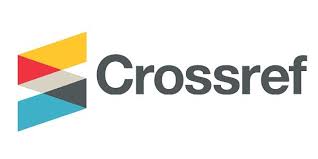IJCRR - 4(18), September, 2012
Pages: 71-77
Date of Publication: 29-Sep-2012
Print Article
Download XML Download PDF
NEW TECHNIQUE FOR PREPARATION OF DRY SPECIMEN USING DISCARDED CADAVERIC PARTS
Author: Lalit Kumar Jain, Pooja Rajendra Gangrade, Neha Vijay
Category: Healthcare
Abstract:Background and objectives: Anatomy is best learned through dissection, prosected parts, models, photos, computer simulations and various imaging modalities. Gross anatomy specimens too, area valuable aids, in the teaching of anatomy, but their storage and handling poses a great inconvenience due to the routinely used formaline preservation technique. Various scientists and anatomists have tried to preserve such specimens, some very expensive, some very complicated, some requiring skilled expertise. In the present study we have tried to come out with a new technique to make teaching specimens. Method: The procedure is far easier to pursue and moreover made from discarded specimens. Conclusion: The specimens thus made saves us from costly expenses, fuming formaldehyde and which are also student friendly as they can learn even from freely feeling and touching the specimen.
Keywords: formaline, museum techniques, plastination, specimens, teaching aids
Full Text:
INTRODUCTION
Museums have been historically the centres for education, creative thinking, virtual learning, and research. Visualisation of three dimensional specimens locked inside the jars of museums invite the students interest towards the part displayed. Significant advancement in the teaching methodology and the study of anatomy has been made in recent times. The credit goes to all the recent and past anatomists, who have from, time to time evolved newer and more efficient tools of imparting powerful knowledge to students. Anatomy is best learned through dissection, prosected parts, models, photos, computer simulations and imaging modalities like x- ray, cat scans in recent times. Prior to the advent of such technologies, many medical students did not have access to cadavers or prosected parts. To ease them of the difficulty some expert along with artists and sculptors created amazingly realistic renditions of various parts of human body based on observation of dissected cadavers. These models were first used in the late 17th century and were mainly made up of wax and came from Italy, they soon ceased to exist as they were fragile and very delicate to handle. Then came the era of plastic and metal, all these models posed a similar problem that they all were made by people who were not from medical background and with very slight or negligible knowledge of the human body, thus the outcome of such practise was not as fruitful as expected. It is well said,“Seeing promotes understanding and understanding in turn promotes the most practical kind of body education possible”. Although, the use of artificial tools like wax models, plastic and metal models help the learner, the importance of original body parts cannot be neglected, as the models are idealized body parts through the eyes of an artist. Gross tissue specimens are a valuable aid, in the teaching of anatomy and pathology, but their storage and handling poses great inconvenience because of the use of formaline. These are traditionally packed in glass jars filled with 10% formaline which makes it difficult to handle as they are fragile and due to the fluid the viewing becomes difficult. On removal from the jar, the practise becomes more unpleasant due to the formaldehyde fumes, also the exposure of these specimens to air, brings quick changes in their colour and deteriorates the features progressively. To avoid these barriers some scientists like Harold Meryman used the technique of freeze drying but it also had limitations as the architecture of the specimen was distorted1 .There were others who used forced air impregnation method2 . In 1977, a breakthrough by scientist and anatomist, Dr Gunthen Von Hagens, came into the world of specimen preservation technique which was termed as the plastination3,4. It is a process which halts the decomposition process by extracting all bodily fluids and soluble fats from the specimens, replacing them through vacuum forced impregnation with reactive resins and elastomers and then curing them with light, heat and certain gases which gives the specimen rigidity and permanency. But the process is extremely expensive and requires expertise in making the specimen. To avoid the expenses and lessen the burden of the expertise required, in our present study we have tried to make specimen from the unwanted, visibly distorted and discarded body parts, which nevertheless would have to see the face of an incinerator. MATERIALS AND METHOD Discarded dissected cadaveric parts were collected from the Dept. of Anatomy, at Geetanjali medical college, Udaipur (Rajasthan), India. After detailed discussion, on what best deep dissection could be carried out on the said parts the process began: All the dissected parts were cleaned to remove any excess connective tissue either on the muscles , tendons , blood vessels , nerves , even the bone was cleaned completely to remove any extra trace of muscle , tendon attachment and even stripped off of its periosteum. The joint cavity once opened and the muscle and neurovascular bundle to be showed in the specimen, were clearly demarcated by removing all the other tissues. the joint cavity and other tissues were then packed with cotton and covered adequately so as to preserve the in situ architecture (Fig 1). The specimen was then left in shade to dry for at least a week. After inspection of the specimen that it had dried, the neurovascular bundles and adjoining ligaments or tendons or muscles were coloured using the anatomical scheme of colours , i.e. yellow for nerves, red for artery, blue for veins, green for ligaments and tendons, using a paint brush and oil colours (Figs 2,3,4,5,6,7). After leaving the specimen to dry again the parts were then prepared to be polished by series of coats of varnish. This coat protects the bone from any destruction by the environmental factors and gives the lustre to the soft tissue and hard parts. The mounting of the specimen was also done using discarded material, for which an empty 2 litre soft drink bottle, a thin steel rod, some pebbles and plaster of Paris were required. The bottom of the soft drink bottle was cut from above horizontally leaving around 10 cm of it from its base, this would act as a cast for making the stand. A vertical slit was made on the above cast, so that it could be opened easily. A mixture of plaster of Paris was made and a steel rod was placed in the centre of the cast. Along with the plaster of Paris, small pebbles were put in the cast, these pebbles would give the base more weight and make it more stable and allowed to set. Later the cast was removed and the base was coloured using desired scheme (Fig 8). The bone was drilled in its lower end and the steel rod fixed in it. DISCUSSION The above approach, used to make dry specimens using the discarded parts of the human body have many advantages over the past methods described above5,6 . At the onset, the parts are readily available in the department, like other procedures we do not have to depend on sources from outside which are usually very expensive, like the ones used in the process of plastination where resins and polymers are used, formalin fixed jars where formaldehyde is required. Furthermore the parts used are almost discarded after dissection by students, thus we do not use new cadaver or a fresh body part to make the specimen. The process is very cost effective, colours, plaster of paris are very cheap resources, easily available and usually are present in all departments. No special expertise is required as seen in case of plastination, where only the expert can perform the procedure under conducive environment and well established laboratory. Here even a postgraduate or an undergraduate student can make a specimen under guidance, thus can be made at every teaching institute. Due to the nature of the specimen, it can be handled easily, without the fear of either spilling the formalin or breaking the model. The architecture of the specimen is maintained truly to its original state, and students can visualise the same by touching and feeling the structures and without any refractive media disturbance , which can make the study cumbersome . The normal colours of tissues are maintained and specimens are more durable as they can last longer. These can be easily transported and used as teaching aids even in lectures and demonstrations.
CONCLUSION
Although the above study has several advantages to it, yet it has its own limitations. as the study hasn’t been performed on bodily viscera and other soft tissues till date . But it has a promising future in the field of anatomy and museum techniques.
ACKNOWLEDGEMENT
Authors acknowledge the immense help received from the scholars whose articles are cites and included in the references of this manuscript. The authors are also grateful to the authors/ editors/ publishers of all those articles, journals and books from where the literature for this article has been reviewed and discussed
References:
1. Harold TM. Freezing and drying technique of biological materials: Annals of The New York Academy Of Sciences 1960, 85:503- 734.
2. Henry RW, Butler J. Room temperature “forced air impregnation” off dried lung with S10/S3 xylene mix: J Int Soc Of Plastination 1990, 4: 14-15.
3. Von Hagens G, Tiedemann K, Kriz W. The current potential of plastination: Anat Embryology 1987, 775(4): 411-421.
4. Nicaise M, Simones P, Lauwers H. Plastination of organ: A unique technique for preparation of illustrative demonstration specimens: Flemish Veterinary Journal 1990, 59: 141-146.
5. Arnautovic I, Henry RW, Pobric H, Avdic R, Cutahija R, Tabakovic M, Reed RB. Improved method for dried anatomical specimen preparation 2005, 20: 13-15.
6. Otto FK, Thomas N. On mounting of anatomical specimens in transparent plastics: The Anatomical Record 1948, 100(2): 201- 23.




|






 This work is licensed under a Creative Commons Attribution-NonCommercial 4.0 International License
This work is licensed under a Creative Commons Attribution-NonCommercial 4.0 International License